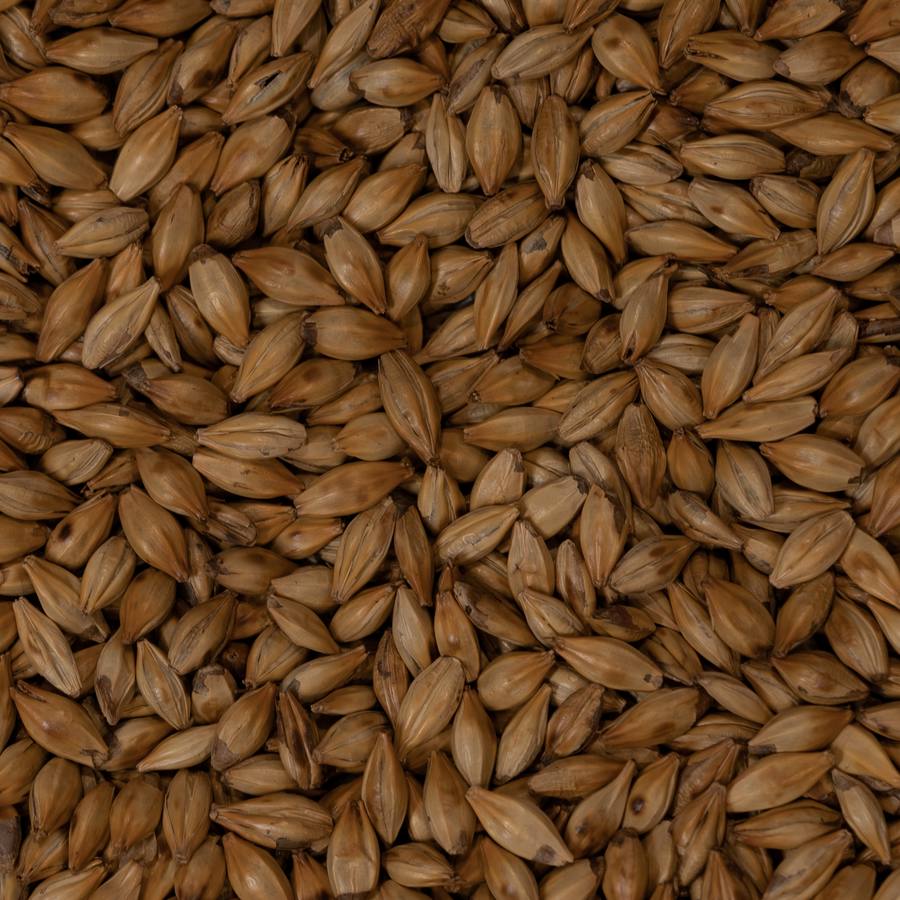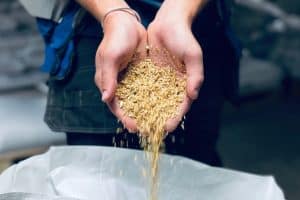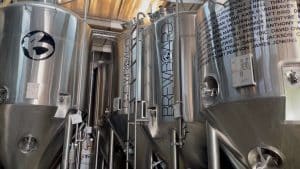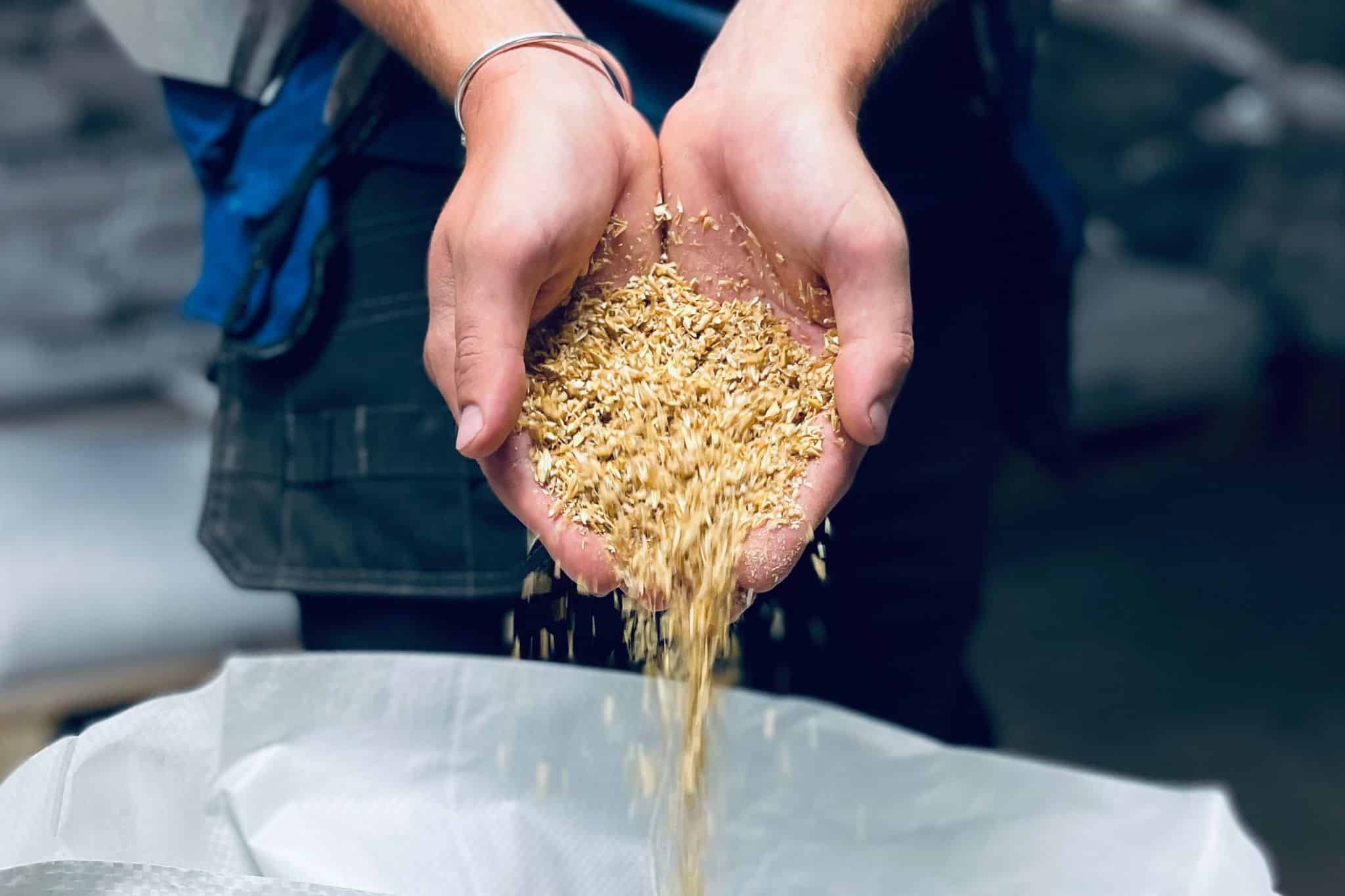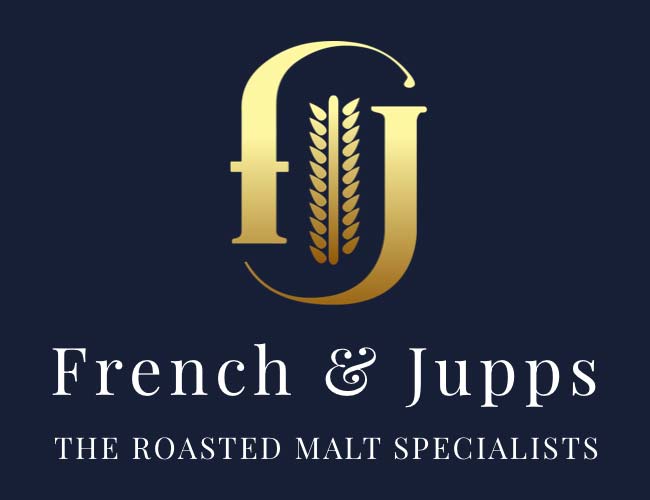A tradition of British excellenceD H JUPP
INTRODUCTION
Coloured malts provide an extensive range of brewing materials capable of imparting flavour characteristics as well as controlling the colour of beer. The British Malting industry is the largest producer of these malts in the world producing over 40,000 tonnes a year. It also offers the widest range of specialist malts, allowing British brewers the opportunity to impart a diversity of colours.
HISTORY
The history of these malts provides a fascinating insight into the development of British beer styles and their ingredients. It can be seen how the development of these products and their production methods helped to evolve the diverse range of beers that exist in the brewing industry today.
Malts lightly coloured by wood burning kilns on a domestic scale were the only malt used until 1680 when coke was discovered as a clean fuel which dried the malt without coloration producing the first pale malts.
However, the most popular beers of the 18th and 19th centuries, particularly in London, were the ‘porter’ beers. Indeed, at this time many of the malting of Ware a major malting town with over 100 malthouses, produced only brown malt for the London porter breweries.
Recipes from the early 19th century show this beer to be brewed from a 100% brown malt grist. This malt was produced on a wood fired kiln, normally oak but beech, hornbeam and ash were also used. This would be finely cut and tied to five foot lengths and known as faggots.
The malt was spread very thinly to a depth of 1/12 ” in the small kilns on woven wire floors. It was partly dried by the wood for an hour, allowed to cool and then re-dried very quickly at high temperature while it was turned rapidly. The colour achieved must have been a maximum of 30 EBC to ensure that enough enzymic activity was retained for conversion in the mash tun.
This brown malt, also know as “oak dried” or “blown” because of the expanded grain size caused by the rapid moisture loss, was used to a create a party-guile: The higher gravity beer, referring to its strength, was called ‘stout porter’ or just ‘stout’ with the lower gravity beer producing a weaker and cheaper ‘porter’ beer.
In 1817 Daniel Wheeler patented his ‘Improved Method of Drying and Preparing Malt’ which introduced for the first time the idea of a roasting drum to replace the kiln to produce coloured malts: In his patent he describes ‘applying heat by means of a cylindrical iron machine or vessel similar in its construction to that now commonly used with a revolving motion for roasting of coffee’
This allowed, he stated, roasting to ” a temperature of 400F and upwards” and this expanded the colouring values obtainable by introducing black malt and roasted barley for use in these darker beers. As he states ” a small quantity of malt thus prepared will suffice for the purpose of colouring beer or porter”.
As part of the malt tax, in force at the time. The production of these highly roasted malts was strictly controlled. The 1842 Roasted Maltsters Act states “malt not to be roasted for sale, or sold, except by persons duly licensed” This special licence or patent led to these malts being commonly known as ‘patent malts’.
During the 1860’s brown malt was being replaced by pale amber malts. Also at this time the first roasting of saturated green malt in the drum created crystallised malt or ‘crystal malt’. This coincided with the development of ‘running bitters’ that replaced well matured pale ales. Running bitters were ready to drink after a day or two in the pub cellar and the crystal malt helped to give body and flavour to the beer.
A copy of a page of the French & Jupp’s sales book of 1872 shows all these coloured malts being sold at that time, indeed the company had long specialised in the production of these malts. There is documentary evidence that the Jupp family was malting in Sussex in 1689 and so they were probably active maltsters before this date. The business had moved to Brentford in 1840 to take advantage of the rapid expansion of beer production in London. The company had established a roasting house at Spitalfields, the malt being transported up to London by barge where it was converted into black malt. To safeguard the business the Jupp family entered into partnership with the barge owner, Mary French, Who was also a farmer and must have been an exceptional lady of her time.
In 1890, the then head of the company, David Jupp, considered that it would be more efficient to concentrate malting and roasting at Stanstead Abbots which was now well served by the railways. Je therefore purchased the present site and many of the original buildings still exist including the Kilns which date back to at least 1750.
By the beginning of this century, brewers were experimenting with a combination of all these malts for their dark beer recipes. As Lawrence Briant states in his article in the Journal of 1907:
‘Brown and amber malts have of late years fallen somewhat into disfavour, black being relied upon for colour, crystal for flavour. However,….. such malt if really well made gives a characteristic flavour not possessed by either black or crystal. It is, indeed, by a skilful blending of the several types of coloured malt that some of the most successful black beers are produced.
The development of the range of these malts by British maltsters this century has continued as new beer styles have evolved. Low colour ‘caramalt’ or ‘carapils’ has been introduced to give palate fullness, flavour and body to lager beers. Likewise, chocolate malt has become commonly used in mild ales and mellow stouts: And, of course, crystal malt of various colours has become a standard grist component of most bitters.
This long British tradition of manufacture of the specialist malts as led to the wide range now available. By examining their production methods, specification and characters their potential modern applications can be explored.
MANUFACTURE
The manufacture of coloured malt in the modern British roast house requires intensive energy usage, capital investment, technology and quality control. Most importantly it requires highly skilled and experienced operators trained in the traditions of roasting as an art. No machine can replace the experienced roasted in the skills acquired through the experience of smelling, grinding and chewing the malt and judging by eye the correct colour or modification.
The largest modern roasting machines handle a batch of 3.5 metric tonnes. They are modified coffee roasters which rotate at approximately 30rpm and are fitted with vanes which impart a dual mixing system on the grain. This produces an even roast by ensuring continuous suspended movement, and also minimises corn damage caused by charring.
The drum is heated by oil or gas burners which provide uniform heat along the drum. These burners must be accurately controlled to enable the operator to maintain the correct temperature profile throughout the roast. Figure shows a typical control panel with a mimic display to monitor and operate the entire roasting process from loading to discharge and cooling.
These drums by adjustment of flaps can provide either direct heat through the grain or indirect heat around the cylinder. With direct heating hot dry air passes through the drum; for indirect heating the grain is heated at a constant moisture level giving a stewing effect. This, as described later, is vital to saccharification during the roasting of crystal and caramalt.
As well as having the most sophisticated modern roasting equipment, as with all British malts, coloured maltsters in this county are also blessed with the best raw material: As a result of the climate, the diligence of the grower and the plant breeding agencies it is possible to obtain the best single variety barleys and specifications for each product. As with all malts but particularly with coloured malts uniformity of grain size, nitrogen content and germinative capacity are essential so that the chemical and physical changes that occur during roasting occur evenly.

